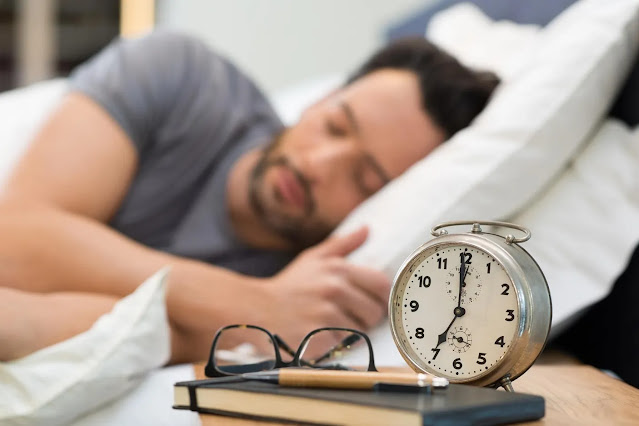Why Do Humans Sleep? Scientists Find Clues for Solving This Age-Old Mystery
New understandings of brain activity during sleep might aid in the development of aids for people with neurologic disease or impairment.
What makes people sleep? Scientists have debated this topic for hundreds of years, but a recent study from Massachusetts General Hospital (MGH) researchers, conducted in collaboration with specialists from Brown University, the Department of Veterans Affairs, and several other institutions, adds new information that could help solve this mystery. Their study, which was just published in the Journal of Neuroscience, may aid in the explanation of how people recall information and learn new abilities. It could also aid in the development of aids for those with neurological disorders or accidents.
Lead author of the study and neurologist Daniel Rubin, MD, Ph.D., of the MGH Center for Neurotechnology and Neurorecovery, claims that the "replay" phenomena that occurs when we sleep has long been known to science. The brain is supposed to employ replay as a recall mechanism for fresh knowledge. Monitoring devices may show that a certain pattern of brain cells, or neurons, light up when the trained mouse takes the correct way through the labyrinth. The neurons will fire again in the same order later, when the animal is asleep, according to Rubin. According to scientific theories, the brain consolidates memories—that is, turns them from short-term memories into long-term memories—by practicing newly learned information while the body is asleep.
However, replay has only been adequately shown in lab animals. What percentage of the time does this concept of how humans learn things hold true in the neuroscience community? Neurosurgeon Sydney S. Cash, MD, Ph.D., co-director of the Center for Neurotechnology and Neurorecovery at MGH and co-senior author of the study, questions if this is true for various types of learning. Cash emphasizes how knowing if replay happens while acquiring motor abilities might direct the creation of novel treatments and equipment for patients with neurologic disorders and accidents.
In a recent study, researchers discovered the first proof of replay in the human motor cortex, which regulates voluntary movement. This might yield knowledge about how humans learn and establish long-term memories, as well as ideas for those who design assistive devices for paralyzed individuals. Massachusetts General Hospital, credit
Rubin, Cash, and their colleagues recruited a 36-year-old man with tetraplegia (also known as quadriplegia), meaning he is unable to move both his upper and lower limbs, in this case as a result of a spinal cord injury, to study whether replay occurs in the human motor cortex—the brain area that controls movement. The guy is a participant in a clinical trial of a brain-computer interface device that enables him to operate a computer cursor and keyboard on a screen. He is known in the study as T11. The BrainGate consortium, a cooperative effort involving clinicians, neuroscientists, and engineers at various institutions, is creating the investigational device with the aim of developing technologies to reestablish communication, mobility, and independence for people with neurologic disease, injury, or limb loss. Leigh R. Hochberg, MD, PhD, of MGH, Brown University, and the Department of Veterans Affairs is in charge of the partnership.
In the research, T11 was given a memory exercise that was modeled after the video game Simon, in which the player must recall and repeat a pattern of flashing colorful lights after first observing it. He did nothing more than imagine moving his own hand, and that was all it took to move the pointer on the computer screen. T11 was able to move the mouse across the screen and click where he wanted by using sensors implanted in his motor cortex to assess patterns of neuronal activity that represented his intended hand movement. These brain impulses were wirelessly transferred to a computer after being captured.
T11's motor cortex activity was captured that night while he slept at home and wirelessly sent to a computer. What we discovered, according to Rubin, "was fairly amazing." "He was essentially sleeping during the entire game." According to Rubin, T11's neuronal firing patterns during sleep on a number of times perfectly mirrored patterns that happened when he was playing the memory-matching game earlier that day.
According to Rubin, this is the clearest illustration of motor cortex replay that has ever been observed in people during sleep. Slow-wave sleep, a stage of deep sleep, is when the majority of the replay that was discovered in the research took place. It's interesting that when T11 was in REM sleep, the stage of sleep most frequently linked to dreaming, replay was significantly less likely to be seen. This research, in the opinion of Rubin and Cash, lays the groundwork for future studies on replay and its function in human memory and learning.
Cash emphasizes the significance of shifting this line of inquiry from animals to humans, saying, "Our hope is that we can use this information to help build better brain-computer interfaces and come up with paradigms that help people learn more quickly and efficiently to regain control after an injury." He thanks T11 and the other BrainGate clinical trial participants, saying, "This sort of study benefits greatly from the intimate engagement we have with our participants."
Hochberg agrees. "Our incredible BrainGate participants provide not only helpful feedback toward the development of a system to restore communication and mobility, but they also give us the rare opportunity to advance fundamental human neuroscience," he says. "We can use that information to build next-generation restorative neurotechnologies."
Rubin teaches neurology at Harvard Medical School as well (HMS). Cash teaches neurology as an assistant professor at HMS. Hochberg teaches engineering at Brown University and is a senior lecturer in neurology at HMS.




Comments
Post a Comment